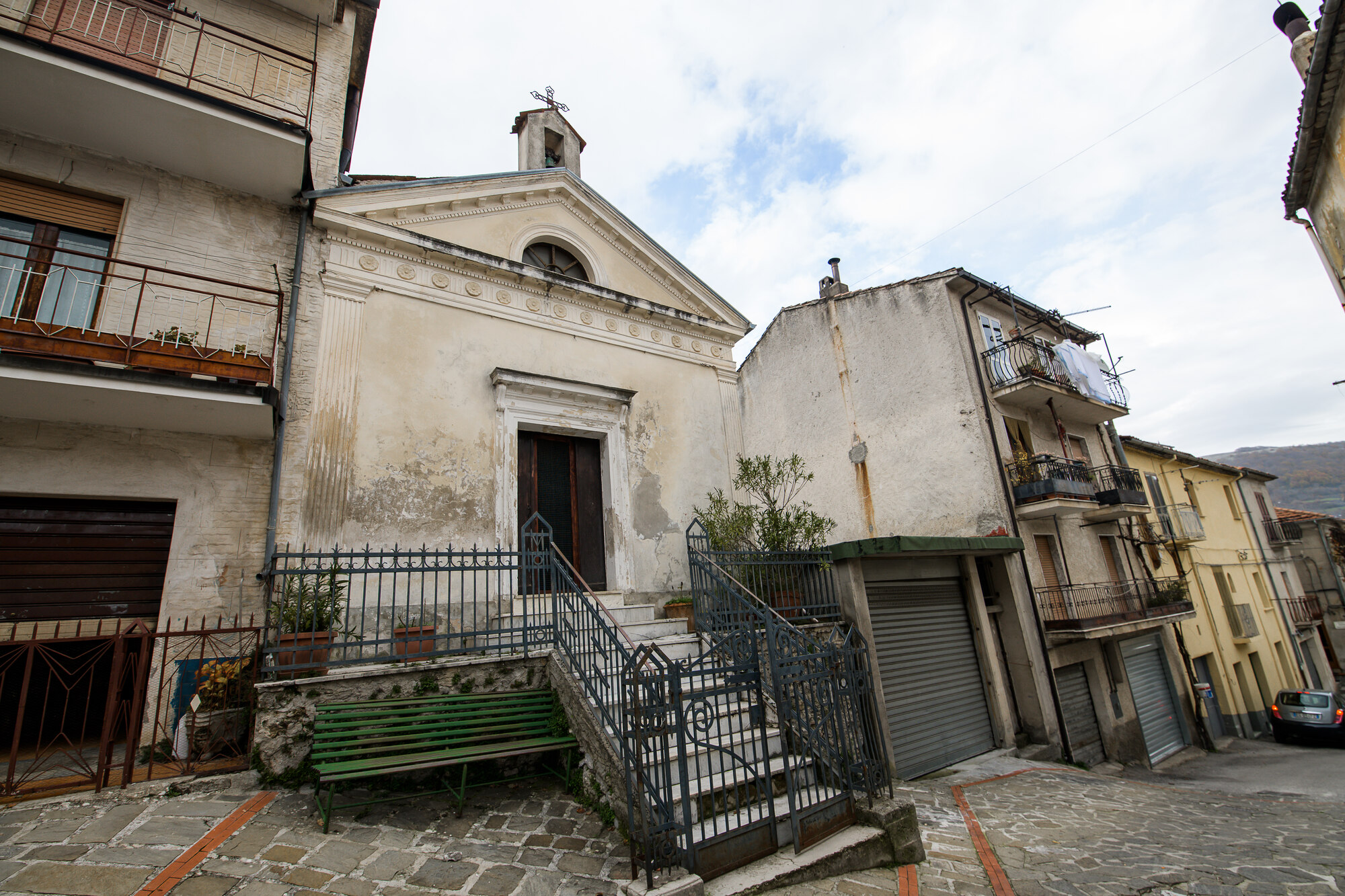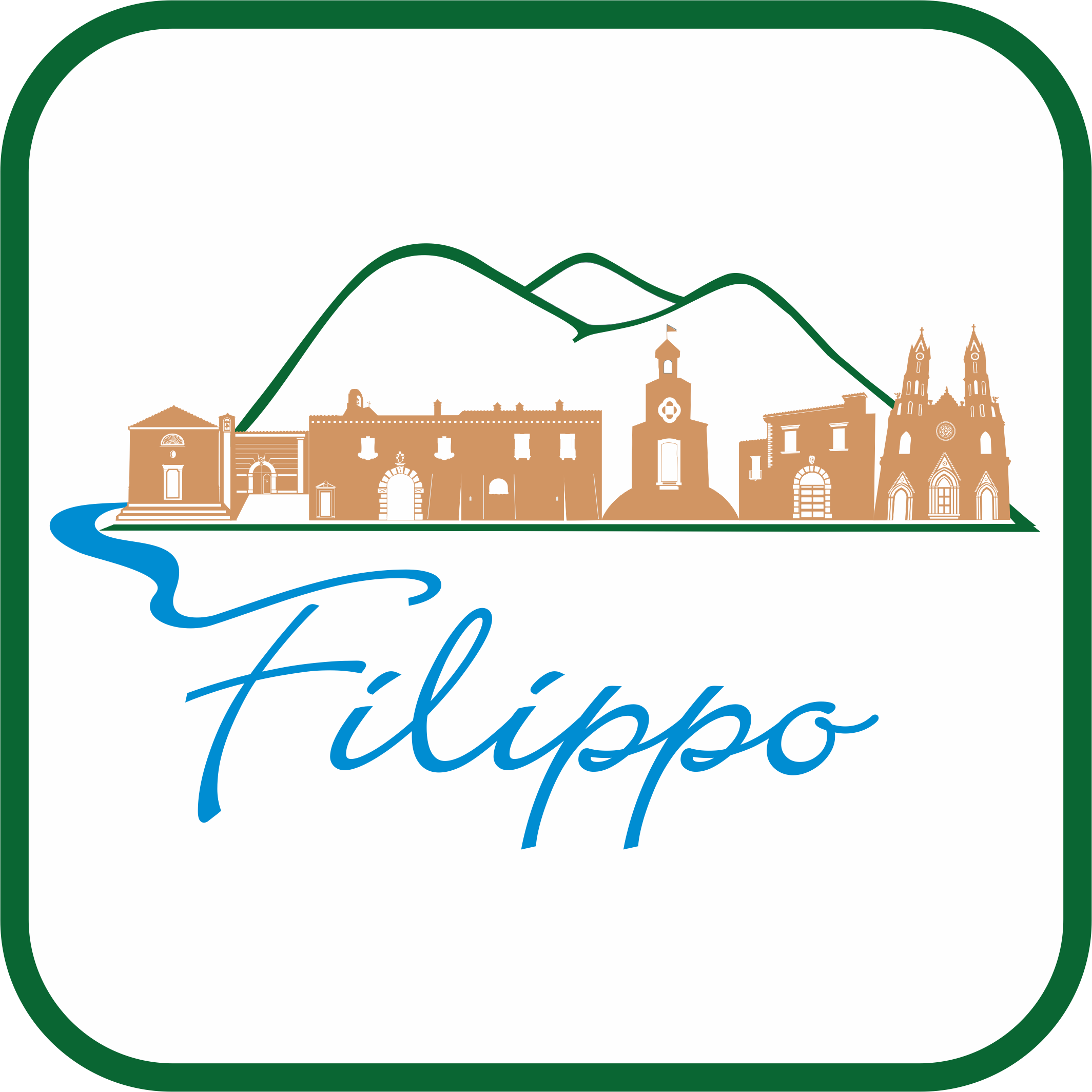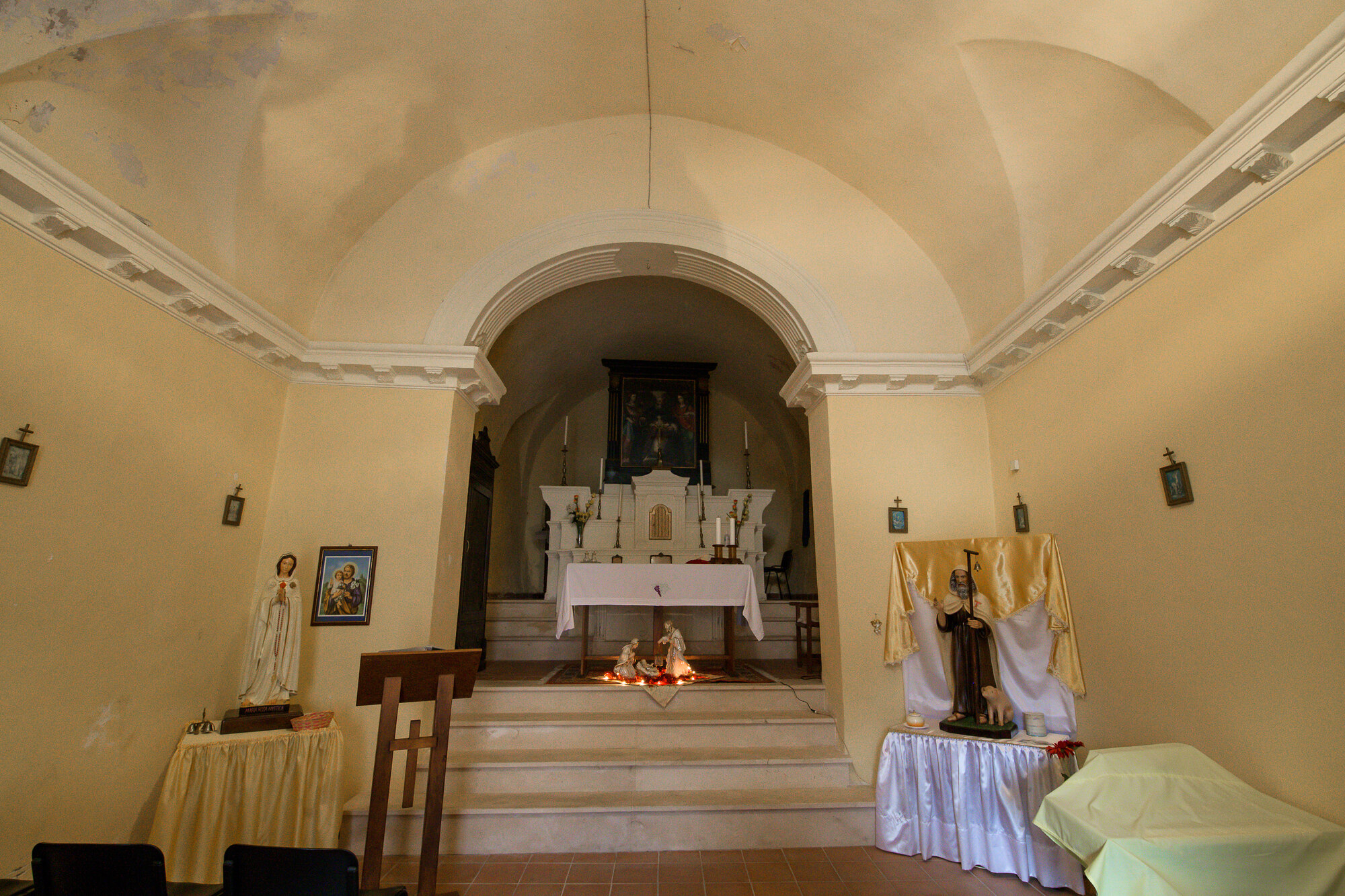Beautiful Architecture
Chiesa di Sant’Antonio Abate



La Chiesetta, detta comunemente di Sant’ Antonio, ha origini molto antiche, legate al culto per il Santo Eremita, introdotto nell’Italia Meridionale dagli Antoniani di Vienne, nel Delfinato, verosimilmente nella prima metà del Sec. XIII.
La data del 1617 riportata sulla piccola campana potrebbe testimoniare un restauro avvenuto in quell‘anno o piuttosto un cambiamento di titolo, infatti nella relazione della visita pastorale fatta dal Commissario apostolico Lelio Ferro il 18 settembre 1687, la chiesa è menzionata sotto il titolo di “Santa Maria dei Martiri”, confermata anche dall’iscrizione impressa sulla stessa campana.
Il documento citato ci informa, inoltre, che, annesso alla Cappella, si trovava l’Ospedale”, edificio di ridotte dimensioni adibito all’accoglienza e alla cura degli infermi. In un successivo documento del 1800 appare intitolata a Sant’ Antonio e Santa Lucia, di diritto di Patronato della famiglia Cestari: “ha pesi di messe n° quaranta; due delle quali solamente sono cantate, una à 17 gennaio, e l’altra à 13 dicembre, giorni di Sant’ Antonio e Santa Lucia, e le altre lette per ciascun anno”.
L’edificio si presenta a pianta rettangolare ad aula unica; il soffitto è a volta a botte, intersecato da otto velette laterali, sull’altare maggiore si può ammirare una pregevole tela raffigurante Sant’ Antonio in mezzo a due martiri: Santa Lucia e Sant’Agnese. La facciata, rimessa a nuovo negli anni 90 con Fondi Regionali è decorata con lesene laterali a stucco, sormontate da timpano decorato da mensole e rosette, con al centro un foro semicircolare. Alla sommità del tetto si erge un piccolo campanile a vela. Per quanto concerne la tradizione locale, fino a qualche anno addietro, il 17 gennaio, nella piazzetta antistante si portavano gli animali per la benedizione, che avveniva dopo la celebrazione della messa, persiste ancora, invece, quella dell’accensione dei “fuochi”, che si tiene la sera del 16 gennaio, previa la “cerca” della legna nei giorni precedenti, da parte dei montesanesi.
The church, commonly known as Sant 'Antonio, has very ancient origins, linked to the cult of the Holy Hermit, introduced in Southern Italy by the Antonians of Vienne, in the Dauphiné, probably in the first half of the 13th century.
The date of 1617 shown on the small bell could testify to a restoration that took place in that year or rather a change of title, in fact in the report of the Pastoral Visit made by the Apostolic Commissioner Lelio Ferro on 18 September 1687, the church is mentioned under the title of " Santa Maria dei Martiri ”, also confirmed by the inscription impressed on the same bell.
The aforementioned document also informs us that, annexed to the Chapel, was the "Hospital", a small building used for the reception and care of the sick. In a subsequent document from the 1800s, it appears entitled to Sant 'Antonio and Santa Lucia, by right of patronage of the Cestari family: "it has masses of forty; two of which only are sung, one on 17 January, and the other on 13 December, days of Sant 'Antonio and Santa Lucia, and the others read for each year ".
The building has a rectangular plan with a single room; the ceiling is barrel vaulted, intersected by eight lateral veils, on the high altar you can admire a valuable canvas depicting Saint Anthony between two martyrs: Saint Lucia and Saint Agnes. The façade, refurbished in the 90s with Regional Funds, is decorated with lateral stucco pilasters, surmounted by a tympanum decorated with shelves and rosettes, with a semicircular hole in the center. At the top of the roof stands a small bell gable. As regards the local tradition, until a few years ago, on January 17, animals were brought to the square in front of them for the blessing, which took place after the celebration of Mass, however, the lighting of the "fires" still persists, which is held on the evening of January 16, after the "search" of the wood in the previous days, by the people of Montesano.



